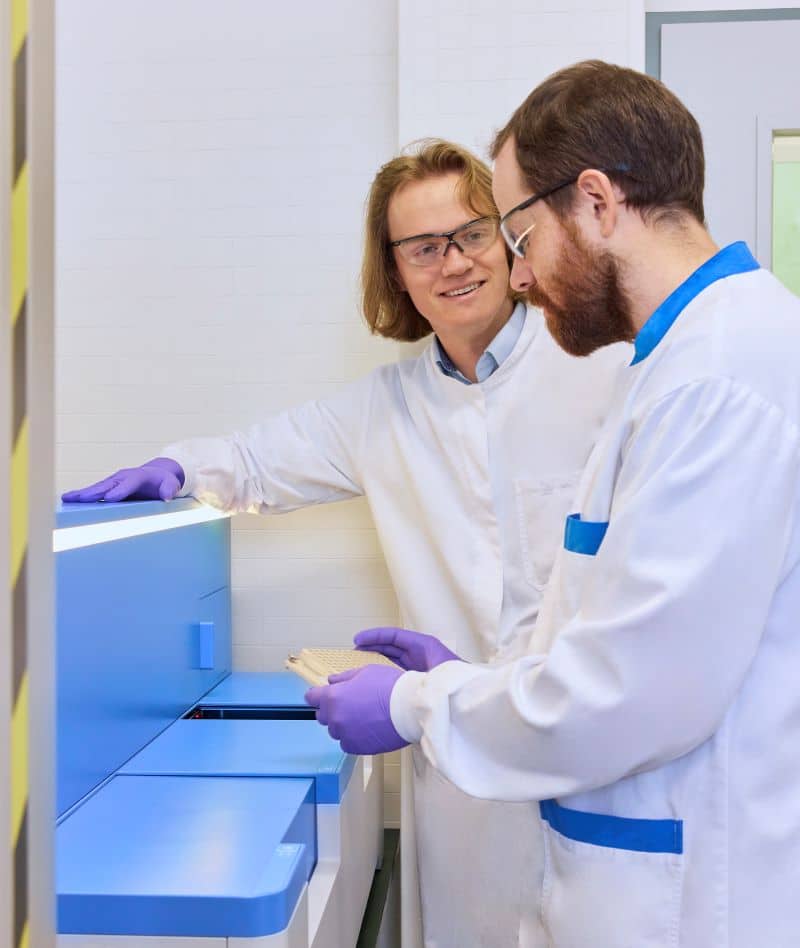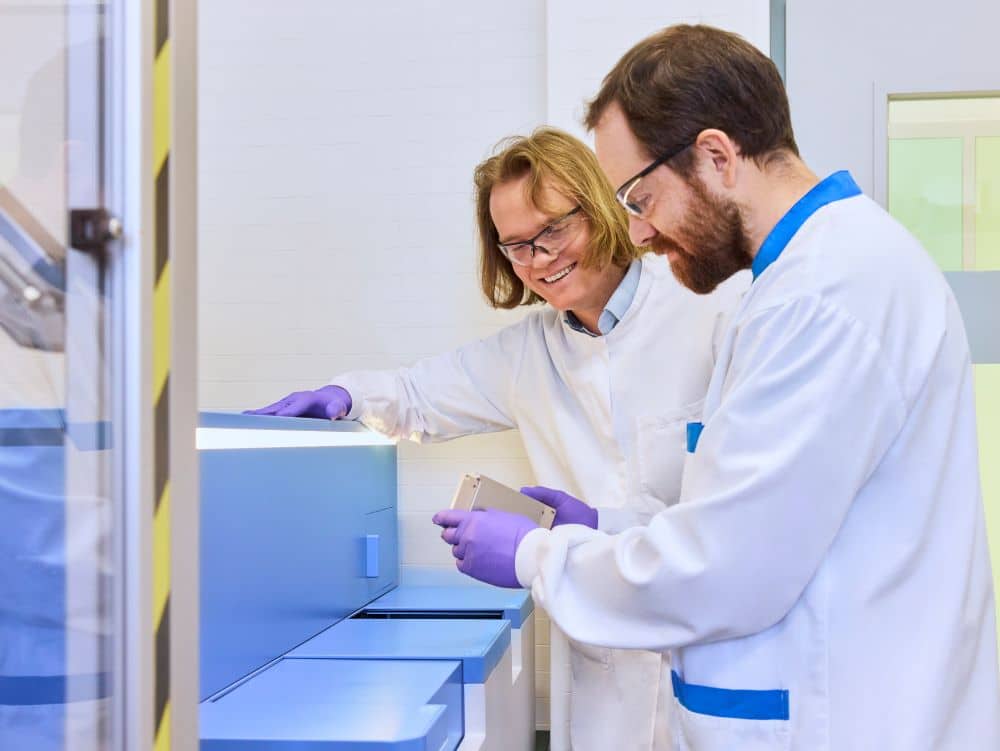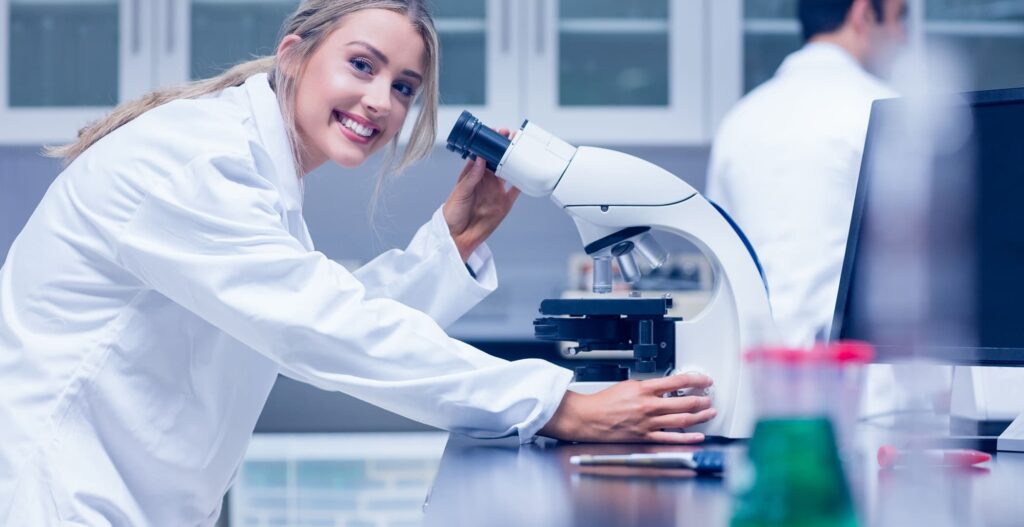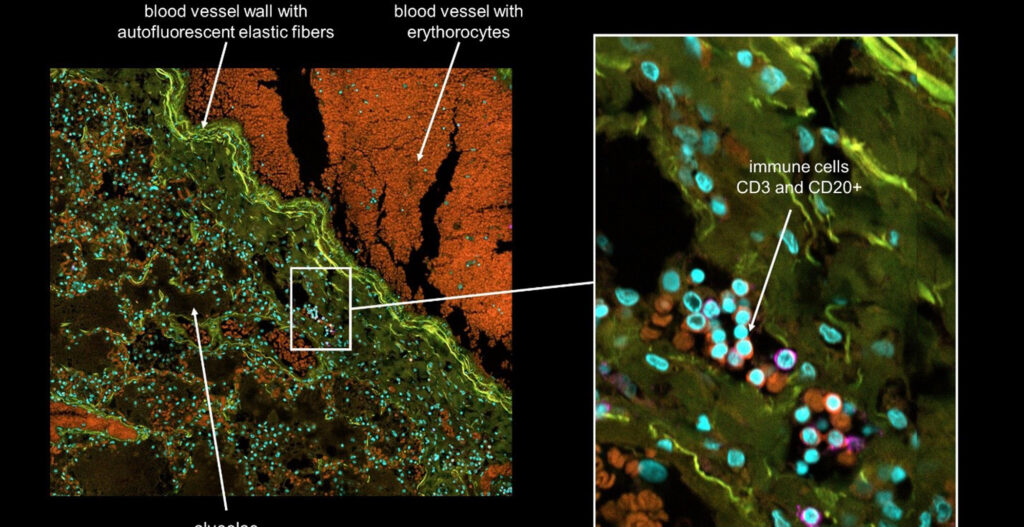We proudly announce the second-ranked research proposal of the Single Cellome™ System SS2000 Research Equipment Program was authored by Dr. Ilya Lukonin and Dr. Joep Beumer, working at the Institute of Human Biology (IHB), Basel, Switzerland. They will use the SS2000 to study cell-to-cell variability and to characterize rare cell types in complex model systems, such as intestinal organoids.
About the researchers
Ilya Lukonin
In his previous work in the lab of Prisca Liberali at the Friedrich Miescher Institute in Basel, Switzerland, Ilya Lukonin focused on establishing phenotypic screening assays in organoid systems. He combines cell culture, assay automation, high-content imaging, and data analysis. His notable work includes a published paper in Nature on intestinal organoid regeneration, leveraging the Yokogawa CellVoyager imaging platform (Lukonin et al., Regenerative landscape of intestinal organoid regeneration. Nature (2020).
Joep Beumer
Dr. Joep Beumer leads the Organoid Gene Editing group at the IHB, finding new approaches to improve and automate gene editing in iPSC- and adult stem cell-derived cultures. His research focuses on employing genome engineering of stem cells to understand lineage specification in adult epithelia, control the cell type composition of organoids, and build organoid models that can be harnessed for basic research and drug discovery. During his time as a PhD researcher and later post-doctoral researcher at Organoid group, Hubrecht Institute in the Netherlands, he studied lineage specification in the gut using intestinal organoids. These cells, called enteroendocrine cells (EECs), are specialized cells found within the gastrointestinal tract, stomach, and pancreas, making only 1% of that epithelium. They produce and release hormones in response to several stimuli. EECs produce more than 20 hormones that are key regulators of human physiological processes such as insulin secretion, appetite, and bowel movement. Understanding the specification and function of this lineage specification can be beneficial, for example, for treating metabolic diseases.
Why 3D Organoids?
In the last decade, organoids and three-dimensional (3D) organotypic systems have become widely available to researchers. These complex structures recapitulate the architecture and function of in vivo organs and tissues and develop from stem cells or organ-specific progenitors in a self-organizing process. Organoids can be used in diagnostics, disease modeling, drug discovery, and personalized medicine. Organoid cultures exhibit significant heterogeneity and variable complexity in cellular composition.
Research plan with SS2000
The analysis of cellular states and the perturbation of cell communities using the Single Cellome™ System SS2000 will help uncover mechanistic insights into the formation of intestinal organoids, a highly complex process underlying regulation by multiple signaling pathways. The study of cell-to-cell variability with the SS2000 by collecting cells in various cellular states and assessing organoid formation would be possible.

The characterization of rare cell types is another new opportunity enabled by SS2000. Enteroendocrine cells (EECs) are rare intestinal hormone-producing cells comprising less than 1% of the epithelial cell number in the intestine. The combination of organoid culture to produce physiological EECs and the ability to track these fluorescently can be uniquely exploited by the SS2000.
The Yokogawa team wishes the IHB researchers a lot of success with their ambitious project.
Picture credits: Roche




